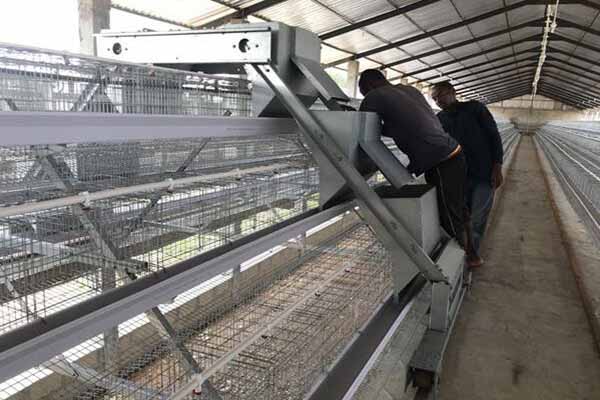Poultry Cage Solution for 25000 Birds: A Comprehensive Guide
Time : 2025-06-28
The raising of poultry has become an essential aspect of modern agriculture, and with the increasing demand for eggs and meat, the need for efficient and scalable solutions has never been greater. One such solution for large-scale poultry farming is the implementation of a poultry cage system designed to accommodate up to 25,000 birds. This article delves into the intricacies of designing and maintaining a poultry cage solution for such a significant number of birds, providing a comprehensive guide for farmers and industry professionals.
Introduction to Poultry Cage Systems
Poultry cage systems are designed to house chickens, ducks, turkeys, and other poultry in a controlled environment. These systems offer several advantages, including improved biosecurity, easier management, and enhanced animal welfare. When planning a poultry cage solution for 25,000 birds, it is crucial to consider the following factors:
1. Space Allocation
The first step in designing a poultry cage solution is to determine the appropriate amount of space per bird. Generally, each bird requires between 2 to 3 square feet of space. For a system housing 25,000 birds, this would equate to approximately 50,000 to 75,000 square feet. It is important to allocate space not only for the birds themselves but also for feeders, waterers, and waste management systems.
2. Cage Design
The design of the cages is crucial for the overall success of the poultry operation. There are various types of cages available, including:
– Flat decks: These are solid decks where birds are free to move around.
– Slatted decks: These decks have openings that allow for easier waste removal and air circulation.
– Batteries: These consist of a series of cages stacked on top of each other for maximum space utilization.
For a system housing 25,000 birds, a battery system is often the most efficient choice due to its space-saving design. Each tier of the battery can be designed to hold a specific number of birds, ensuring even distribution.
3. Environmental Control
Maintaining an optimal environment is essential for the health and productivity of the birds. The following factors should be considered:
– Temperature: Poultry are sensitive to temperature changes, so it is crucial to have a reliable heating and cooling system. In a 25,000-bird system, this may require multiple heating and cooling units.
– Ventilation: Adequate ventilation is necessary for maintaining a healthy environment and for managing odors and ammonia levels. The system should be designed with fans and air exchanges to ensure fresh air circulation.
– Humidity: High humidity can lead to respiratory issues and other health problems. A humidity control system should be integrated into the design.
4. Feeding and Watering Systems
Feeding and watering systems are critical components of a poultry cage solution. For 25,000 birds, the following considerations should be made:
– Automatic feeders: These should be designed to handle the capacity of the birds and provide consistent feed distribution.
– Waterers: Nipple waterers or cup waterers are commonly used in poultry farming. The system should be capable of delivering clean water to all birds at all times.
– Monitoring: Continuous monitoring of feed and water intake is important for assessing the overall health and performance of the flock.
5. Waste Management
Waste management is a crucial aspect of large-scale poultry farming. For a system housing 25,000 birds, the following strategies should be implemented:
– Automatic manure removal: Slatted decks allow for the automatic removal of manure, which can be collected and processed for use as fertilizer.
– Composting: Composting manure is an environmentally friendly way to dispose of waste and create a valuable byproduct.
– Odor control: Effective odor control measures should be in place to minimize the impact on the surrounding environment.
6. Biosecurity
Biosecurity is essential for preventing disease outbreaks in a large-scale poultry operation. The following measures should be considered:
– Clean and disinfecting procedures: Regular cleaning and disinfection of the cages and facilities are vital to prevent the spread of disease.
– Access control: Limiting access to the farm and ensuring that visitors wear appropriate protective gear can help reduce the risk of introducing diseases.
– Health monitoring: Regular health checks and vaccinations are necessary to maintain the flock’s health.
Conclusion
Designing a poultry cage solution for 25,000 birds requires careful planning and consideration of various factors. By allocating sufficient space, designing efficient cages, controlling the environment, ensuring proper feeding and watering, managing waste effectively, and implementing strong biosecurity measures, farmers can create a successful and sustainable poultry operation.
Tags












